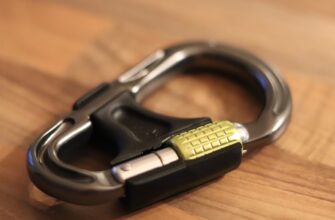Why Protecting Your Ledger Offline is Non-Negotiable
In the volatile world of cryptocurrency, your Ledger hardware wallet is your fortress. But even the strongest fortress needs its drawbridge raised. Keeping your Ledger offline, known as “cold storage,” is the single most effective way to shield your digital assets from relentless online threats like hackers, malware, phishing scams, and exchange collapses. Unlike “hot wallets” connected to the internet, an offline Ledger ensures your private keys – the critical codes granting access to your crypto – never touch the vulnerable online world. This guide dives deep into proven methods for achieving maximum offline protection for your Ledger Nano S, Nano X, or Stax.
Core Methods for Keeping Your Ledger Offline
True offline protection means your Ledger device and its critical recovery phrase exist entirely outside the reach of internet-connected devices. Here are the primary strategies:
- Physical Disconnection: The simplest method. After setting up or performing a transaction, physically disconnect your Ledger from any computer, phone, or charger. Store it securely in a safe, lockbox, or other physically protected location. Only connect it when absolutely necessary.
- Air-Gapped Transaction Signing (Advanced): For heightened security, especially with large holdings:
- Use Ledger Live on an offline computer (never connected to the internet).
- Create an unsigned transaction on your online computer.
- Transfer the unsigned transaction file (e.g., via USB drive) to the offline computer.
- Connect your Ledger to the offline computer, sign the transaction.
- Transfer the signed transaction back to the online computer via USB and broadcast it.
This ensures your Ledger and private keys remain offline even during signing.
- Dedicated Offline Setup: Set up your Ledger wallet on a brand-new computer that has never been connected to the internet. This minimizes the risk of pre-existing malware compromising the initial setup process.
Step-by-Step: Setting Up and Using Your Ledger Offline
Follow these crucial steps to establish and maintain robust offline protection:
- Initial Setup (Safest Method):
- Acquire your Ledger directly from the official Ledger website to avoid tampered devices.
- Use a computer that is brand new or thoroughly cleaned (factory reset) and never connect it to the internet during this process.
- Install Ledger Live on this offline computer (download the installer beforehand on a different machine and transfer via USB).
- Initialize your Ledger device, carefully writing down the 24-word recovery phrase on the provided card. This is your lifeline!
- Generating Your Recovery Phrase (The Golden Rule):
- Your Ledger generates the phrase internally – it never appears on any computer screen.
- Write it down by hand on the official recovery sheet. Never type it, photograph it, or store it digitally.
- Verify the phrase meticulously on the Ledger device screen.
- Secure Storage of Recovery Phrase:
- Store the physical recovery sheet in multiple ultra-secure locations (e.g., bank safe deposit box, high-quality home safe, trusted relative’s safe). Consider fireproof/waterproof containers.
- Never store it online, in cloud storage, email, password managers, or take photos.
- Consider splitting the phrase (Shamir Backup) or using metal backup plates for durability against fire/water.
- Daily Operation & Transaction Protocol:
- Keep your Ledger physically disconnected and stored securely when not in use.
- Only connect it to a trusted, malware-free computer when you need to check balances (view-only mode in Ledger Live is safe) or sign a transaction.
- Always verify the transaction details on the Ledger’s screen before approving.
- Disconnect immediately after use.
- For maximum security, use the air-gapped signing method described earlier.
Best Practices for Long-Term Offline Ledger Security
Beyond the basics, adopt these habits:
- Firmware Updates: Periodically connect your Ledger (to a clean computer) to install critical firmware updates. Verify the update source directly on the Ledger screen. Disconnect immediately after.
- PIN Protection: Always set a strong PIN code (8 digits recommended) on your Ledger device itself. This adds a physical layer of security if the device is stolen.
- Beware of Phishing: Ledger will NEVER ask for your 24-word phrase. Ignore emails, messages, or websites requesting it. Only interact with Ledger Live or the official Ledger website.
- Secure Environment: Perform transactions in a private, trusted location, free from prying eyes or cameras.
- Passphrase (25th Word): For advanced users, add an optional passphrase (a custom word) in the Ledger’s settings. This creates a hidden wallet, adding an extra layer of security. Store this passphrase as securely as your recovery phrase, but separately.
Offline Ledger Protection FAQ
Q1: Is my Ledger safe if it’s just unplugged but near my computer?
A: Physically unplugged is the baseline for offline protection. However, true “cold storage” implies it’s stored securely away from any potential physical tampering or environmental damage, not just unplugged on your desk.
Q2: Can I use my Ledger with a phone and still be offline?
A: You can use Ledger Live Mobile to view balances without connecting the device (view-only mode). To sign transactions, you must connect via Bluetooth (Nano X/Stax) or USB-C. While Bluetooth is generally secure, a physically disconnected Ledger offers the highest assurance. Disconnect immediately after signing.
Q3: What happens if I lose my Ledger device?
A: This is why your 24-word recovery phrase is paramount! As long as you have your securely stored recovery phrase, you can recover your entire wallet onto a new Ledger device (or compatible software wallet, though hardware is recommended). Your crypto is stored on the blockchain, not the device itself. The device just manages access.
Q4: Is it safe to update Ledger Live on my main computer?
A: Yes, Ledger Live is a view-only interface when not connected to the device. Updating it on your online computer is safe. The critical security element is that your private keys remain isolated on the offline Ledger device.
Q5: How often should I connect my offline Ledger?
A: Ideally, as infrequently as possible. Only connect it to check balances if you don’t trust view-only mode, to send transactions, or to perform essential firmware updates (check Ledger’s announcements for critical updates).
Q6: Are hardware wallets like Ledger 100% hack-proof?
A: While Ledger devices are designed with robust security (secure element chip), no system is absolutely 100% invulnerable to sophisticated physical attacks or undiscovered vulnerabilities. However, keeping it offline drastically reduces the attack surface, making it the most secure practical option for individual crypto storage by far. The biggest risks remain phishing scams and physical theft/loss of the device *combined* with compromise of the recovery phrase.
By rigorously implementing these offline protection strategies for your Ledger, you transform it from a secure device into an impenetrable vault for your cryptocurrency. Discipline in disconnection and unwavering security around your recovery phrase are the cornerstones of true digital asset safety.








